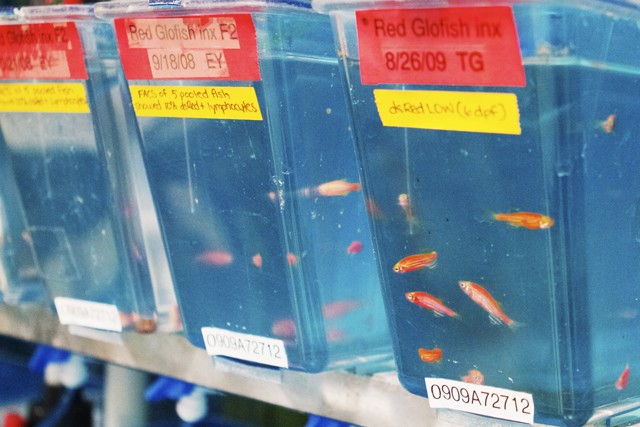They are less than a fingerâÄôs length long and cost only 20 cents each, but zebrafish could help save lives through University of Minnesota research.
The Molecular and Cellular Biology building is home to more than 10,000 genetically mutated zebrafish, and University researcher Tiffany Glass is using them to study bone marrow transplants.
The ultimate goal of her research is to move on to clinical trials with humans, she said.
The University genetically modifies the embryos, mutating the fish to the point of transparency. Organs and other internal body parts
become visible, Glass said.
Zebrafish are the âÄúthe best animal model we have today,âÄù researcher Alexey Benyumov said.
Working with zebrafish gives âÄúmore precision and [is] fun ,âÄù he said.
Zebrafish embryos develop quickly, and their transparency makes research easier because injections can be tracked with the naked eye, he said.
When the 20-cent wild zebrafish arenâÄôt used, University researchers ship transgenic zebrafish âÄî which contain genes from both the fish and from humans âÄî from an Oregon research facility for about $20 a pair, Benyumov said.
Other major zebrafish research areas are cancer and genetic research and testing University-created cancer drugs for effectiveness.
University researcher David Largaespada is using zebrafish to model human cancers by putting various forms of the disease, like colorectal cancer, in the zebrafish.
âÄúWe are discovering new genes that may play a role in cancer development and could represent new targets for chemotherapy drugs,âÄù Largaespada said.
âÄúThis is a really new avenue âĦ for cancer,âÄù said Suresh Pavuluri, president of the University Biological Science Research Club. âÄúItâÄôs a great opportunity for the advance of knowledge.âÄù
This type of research could âÄúpotentially save hundreds of thousands of people,âÄù he said.

Image by Mark Vancleave
Zebrafish genes advance U research
The zebrafish are used to study bone marrow transplants.
Published September 30, 2010
0

